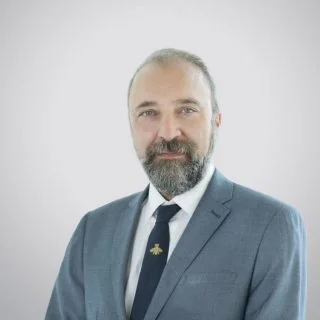What is a Rotator Cuff Injury?
The rotator cuff is found in the shoulder and is made up of four muscles and tendons that surround the shoulder joint. Its purpose is to keep the head of your upper arm bone inside your shoulder socket, providing stability when you lift and rotate your arm. Repetitive movements that put a strain on the rotator cuff can cause an injury such as a tear to occur.
Common signs and symptoms
If you have a rotator cuff injury, you may feel:
- A dull ache in the shoulder
- Disturbed sleep caused by pain from sleeping on the affected shoulder
- Difficulty combing your hair or reaching behind your back
- Weakness in your arm
- Swelling at the front of the shoulder
- “Clicking” in your shoulderwhen raising your arms above your head
Common causes of rotator cuff injury
Rotator cuff pain can be caused either by a substantial injury or from wear and tear of the tendon which happens over time. Repetitive movements or a history of heavy lifting may cause degeneration of the rotator cuff.
You’re more likely to get an injury to your rotator cuff if you:
- Are over 40. The injury risk increases with age and people above aged 40 are more commonly affected by rotator cuff tears.
- Play certain sports.Sports like tennis, baseball and archery can cause rotator cuff injuries due to the repetitive arm motions involved.
- Work in construction.As with some sports, there are also certain jobs which can contribute to rotator cuff problems. Occupations that involve a repetitive strain on the arms, such as plastering and painting, are more likely to cause wear and tear.
- Have a family history of rotator cuff injury. Rotator cuff injuries have been shown to be more common in certain families, so you may be more susceptible due to genetics.
Diagnosing a rotator cuff injury
To reach a diagnosis, your doctor will examine your shoulder and test the strength of your shoulder muscles. You may also be referred for imaging tests (scans) such as:
- X-ray – to detect bone spurs or arthritis that may be causing the pain
- Ultrasound – to look at the soft tissues of the shoulder and assess how they appear during movement
- Magnetic Resonance Imaging (MRI) scan – to look at all the structures of the shoulder in more detail
Once you doctor has established the extent of your injury, they will decide on an appropriate treatment plan for you.
Treating a rotator cuff injury
Most rotator cuff injuries can heal with conservative treatment such as self-care and physiotherapy. More severe cases where a complete tear is present may require surgery.
Self-care
- Avoid any activities that cause pain or weakness in your shoulder
- Ice. Apply ice to the area for 15 to 20 minutes every few hours
- Once the pain has subsided, you can use a heat pack to help with any stiffness you may be experiencing
- Your physiotherapist or doctor may have recommended some stretches which you can do to increase the strength and movement in your shoulder.
Medications
Over the counter painkillers are usually strong enough to help with pain relief and inflammation.
Physiotherapy
Your doctor may refer you to a physiotherapist who will prescribe exercises for you to follow. It is important that you carry out the advice you have been given in order to aid a successful recovery.
Injection Therapy
If non-invasive treatment has not helped to resolve your pain, your doctor may administer an injection to the area. However, injections usually only provide short term relief and it is not advisable to have them repeatedly, as it could result in damage to the tendon.
Surgery
When conservative treatment has failed, surgery may be necessary. There are different types of surgical options available for rotator cuff injuries and your doctor will decide on which approach is most appropriate for you:
- Arthroscopic tendon repair. This is a keyhole procedure where a tiny camera (arthroscope) is inserted into a small incision in your shoulder and tools are then used to reattach the torn tendon to the bone.
- Open tendon repair. An open repair involves making a larger incision to reattach the torn tendon to the bone.
- Tendon transfer. Sometimes it may not be possible to reattach the tendon to the bone, due to excessive damage to the tendon. In this case, the surgeon may take a nearby tendon and use it as a replacement.
- Shoulder replacement. In extreme cases where the rotator cuff is very badly damaged, a shoulder replacement may be the best option. The surgery involves the use of an artificial joint to improve stability. The procedure is called a reverse arthroplasty.
Recovering after a rotator cuff injury
Minor injuries may heal within weeks, depending on the treatment taken.
After surgery, recovery can take four to six months, depending on the size of the tear and other contributing factors. Immediately after surgery, you may need to wear a sling for four to six weeks. Over the counter medication can help with pain relief.
It is also likely that physiotherapy will be prescribed as part of your post-operative recovery plan. The length of the course of physiotherapy will depend on the type of repair that took place.
BOOK AN APPOINTMENT






